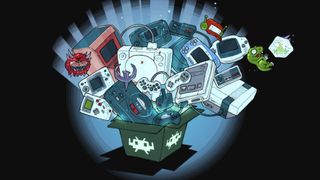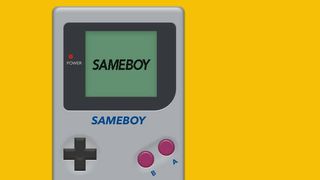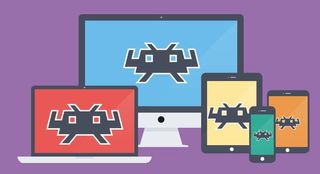RetroArch: Steam Release, Cores and Where to Download This Retro Gaming Tool
Here's what you need to know about RetroArch, a popular emulation tool for retro games.

RetroArch by Libretro has been popping up on people's radar lately thanks to its announced launch on Steam. The tool had already gained wide popularity among people looking for an easy emulation solution on their platform of choice, and it could soon reach a much bigger audience.
For the uninitiated, RetroArch can be a little confusing at first. It isn't an emulator, and it doesn't come with any games. But it does allow you to easily play retro games on not only your Windows, Mac or Linux PC, but also your PS3, 3DS, GameCube and more.
Intrigued? Keep reading to find out everything you need to know about one of the biggest things in retro gaming.
How does RetroArch run old games? And what are RetroArch cores?
As mentioned, RetroArch isn't an emulator. Instead, this program houses and unifies the settings for multiple emulators that already exist. When you run RetroArch, you can download and install "cores" (emulators) from a vast library that covers most retro systems from about GameCube and before.
There's no need to visit each emulator's site and acquire them individually, as RetroArch lets you download and install compatible emulators from within the program itself. And as usual, these emulator cores do not include game files (ROMs or ISOs). You must obtain those preferably through the legal route of extracting the files from a legal copy that you already own.

If you're deep into emulation already on PC, you may already know that running multiple programs — each with its own controller settings and resolutions, hot keys and other quirks — can get cumbersome. RetroArch tries to solve that by tying everything together into one easy-to-use program.
What are the benefits of RetroArch over regular emulation?
Aside from the convenience of unifying your settings among emulators, RetroArch provides an easy-to-use interface to help you navigate all of the different emulators and games you have running. More importantly, RetroArch provides a solution for running emulators on systems other than PC, and it sports a controller-friendly clone of the PS3 XMB menu design.
MORE: The Best Games of 2019 (So Far)
RetroArch can also improve the performance of games when using certain cores with a "run-ahead" feature. This uses RAM-loaded save states to reduce input lag as much as possible. RetroArch also supports a wide range of input devices and allows input profiles to be set across all cores.
When is the RetroArch Steam release coming? And how will it be different?
According to a July 25 post, RetroArch's Steam program is slated to arrive in Q3 2019. It was originally meant to arrive in July, but Libretro wants to "ensure the release is more polished and that it will meet the user expectations of your average Steam user."
The Steam release of RetroArch will start out simply as a means of launching RetroArch from inside Steam, in a sort of Russian nesting doll manner of software launching other software. But Libretro has promised that increased use of Steam functionality will happen down the road.
What platforms can run RetroArch? How do I get it running on my console?
Supported platforms for running RetroArch include PC, Mac, Android, iOS and various consoles, such as PS2, PS3, Xbox 360, Xbox One, GameCube, Wii, Wii U and 3DS.

The installation process can vary in how simple it is to get up and running based on your platforrm of choice, and installation may require access to a PC or smart device to get started or require extra mods to be installed on the platform. But once done, RetroArch can squeeze quite a bit more usefulness out of that old PS3 or Xbox 360 you may have laying around
The downloads page provides a complete list of currently supported platforms and installation instructions, including quick and easy YouTube videos.
Is RetroArch the best way to emulate games?
RetroArch works off of the open-source Libretro API (a programming standard), which means all of the emulators booted up through RetroArch need to conform to this standard. Work often needs to be done to emulators to make this happen, and depending on the emulator in question, this can mean that older versions of an emulator are all that's available through RetroArch.

This tool can make emulation more convenient, but it doesn't remove the usual incompatibilities and glitches you may encounter when running games on unofficial software. Emulators will always improve over time, adding compatibility for more games and smoothing out performance issues, so running the latest build of RetroArch is the best way to ensure the best performance.
If an emulator you're using in RetroArch is giving you problems, support from the emulator creators might not be easy to obtain. That can be the case with MAME, an arcade-emulation suite that has undergone heavy revisions since the last build that's available on RetroArch. Thankfully, everything, including supported cores for emulated platforms, is easily updated through RetroArch when updates are made available.
How do I know which core to use to run a game?
Emulation is always going to require a little more legwork on the player's part to get things going, and this is still true for RetroArch. If a game isn't running, you can check the RetroArch forums or the forums from the emulator's official site and see if the problem is a known issue or something affecting only your setup.
MORE: Best PC Game Controllers
If you know your way around emulators, you'll probably find the ones you like in RetroArch. But if you're completely lost, then some quick Google-fu should point you in the right direction. "SNES emulator" should return Higan as a top result, and, indeed, this is one of the best SNES emulators around.
Does RetroArch support all emulators? Can I add one that I'm using?
You won't be able to drop your existing emulators into RetroArch. You should be able to find the one you were running, but if you don't, then it's likely a work in progress, as the RetroArch platform has only grown in popularity and usage over the years.
What else does RetroArch let me do other than play old games?
Aside from playing games, RetroArch has built-in streaming and recording features and an achievement system. It can also be used to run video and audio files.
Another feature that's slowly being rolled out on PC is disc dumping. Currently supported for only PS1, Sega CD, Sega Saturn and 3DO games, this feature lets you copy game data from original game discs and load the games directly into RetroArch. And Libretro plans to later allow direct play from discs without requiring you to to copy data from them at all.
Sign up to get the BEST of Tom’s Guide direct to your inbox.
Upgrade your life with a daily dose of the biggest tech news, lifestyle hacks and our curated analysis. Be the first to know about cutting-edge gadgets and the hottest deals.
Andrew Melcon is a freelance writer who specializes in covering games and gaming hardware. He's tackled everything from PC game controllers to Pokémon and PUBG and his work has appeared on sites including Tom's Guide, Tom's Hardware, Laptop Mag, and more.
